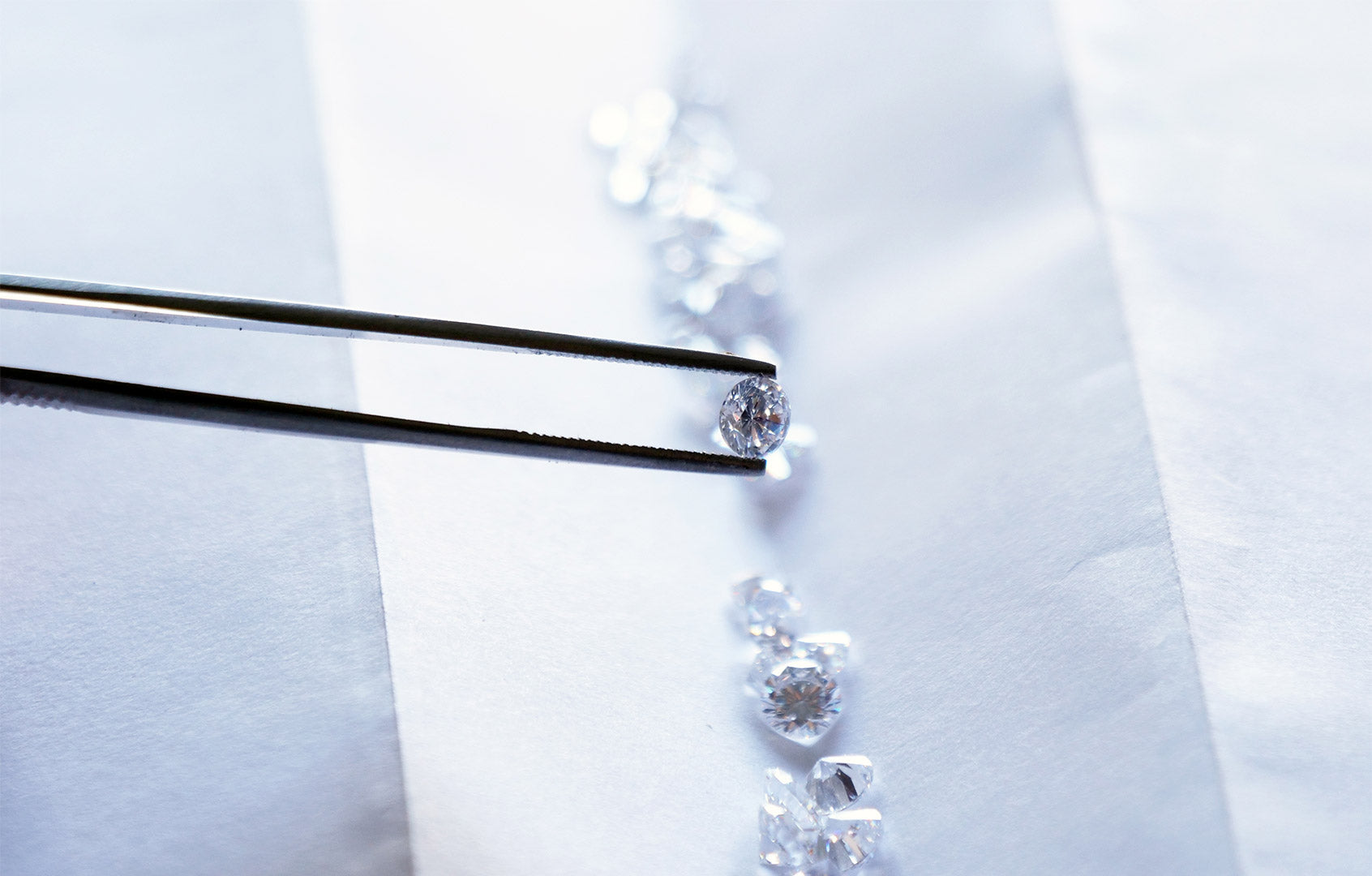In the world of fine jewelry, diamonds have long been celebrated as the ultimate symbol of luxury and beauty. However, with advancements in technology and evolving consumer preferences, moissanite vs diamond have emerged as popular alternatives. These gemstones offer a more affordable and ethical option while retaining the brilliance and elegance associated with natural diamonds. If you are considering either of these gemstones, understanding their differences can help you make the best decision.
What is Moissanite?
Moissanite is a gemstone made of silicon carbide, first discovered in 1893 by French chemist Henri Moissan in a meteorite crater. Natural moissanite is exceedingly rare, so all moissanite used in modern jewelry is created in laboratories. Lab-created moissanite mimics the look of diamonds while offering an ethical and sustainable option for consumers who are conscious of environmental and social impacts.
One of the most remarkable features of moissanite is its brilliance. Moissanite has a higher refractive index than diamonds, which means it reflects more light, giving it a more noticeable sparkle. This brilliance, however, has a different visual quality than that of diamonds, often resulting in a rainbow-like effect, particularly in larger stones.
What is a Lab-Made Diamond?
Lab-made diamonds, also known as synthetic or cultured diamonds, are chemically and physically identical to natural diamonds. These diamonds are grown in controlled laboratory environments using advanced technology that mimics the high-pressure, high-temperature conditions under which natural diamonds form. There are two primary methods for creating lab-grown diamonds: High-Pressure High Temperature (HPHT) and Chemical Vapor Deposition (CVD).
Lab-grown diamonds have the same chemical composition, hardness, and optical properties as natural diamonds. The only difference is their origin—while natural diamonds are mined from the earth, lab-grown diamonds are ethically created in a lab setting. This makes them a more sustainable and conflict-free alternative for consumers who want the real thing without the ethical concerns associated with diamond mining.
Appearance: Moissanite vs Lab-Made Diamond
In terms of appearance, moissanite and lab-made diamonds can look quite similar to the untrained eye, but there are notable differences. Moissanite tends to have a higher brilliance, often described as “too sparkly” by some, especially under natural light. This extra brilliance can create a rainbow effect that distinguishes moissanite from diamonds, which have a more subtle sparkle.
Lab-made diamonds, on the other hand, are virtually indistinguishable from natural diamonds in terms of appearance. Since they are made of the same material, they exhibit the same type of fire and brilliance. Both natural and lab-made diamonds are rated on the same clarity, cut, color, and carat weight scales, which means a lab-grown diamond can look identical to a natural one.
Durability: Which is Stronger?
Diamonds are famous for being the hardest known material, scoring a perfect 10 on the Mohs hardness scale. Lab-grown diamonds share this hardness, making them highly resistant to scratches and damage. This durability ensures that a diamond, whether natural or lab-made, will maintain its appearance and withstand the test of time.
Moissanite is also quite durable, though slightly softer than diamonds, with a rating of 9.25 on the Mohs scale. While still incredibly hard, moissanite is more susceptible to scratching compared to diamonds. However, for everyday wear, moissanite is durable enough to last for many years without significant signs of wear.
Price: A Key Consideration
One of the biggest factors when choosing between moissanite and lab-made diamonds is the price. Moissanite is significantly more affordable than both natural and lab-grown diamonds. Depending on the size and quality, a moissanite gemstone can cost anywhere from 70-90% less than a natural diamond of the same size.
Lab-made diamonds are also more affordable than natural diamonds, though not as inexpensive as moissanite. On average, lab-grown diamonds cost 30-50% less than natural diamonds. This price reduction makes lab-grown diamonds an appealing option for those who want the prestige and appearance of a diamond without the hefty price tag.
Ethical and Environmental Impact
Both moissanite and lab made diamonds are considered ethical alternatives to natural diamonds, especially in terms of environmental and social impact.
Natural diamond mining has been criticized for its significant environmental impact, including land degradation, water pollution, and high energy consumption. Additionally, the diamond industry has been historically associated with unethical practices, including the exploitation of labor and the trade of conflict or “blood diamonds.”
Lab-made diamonds offer a more ethical choice, as they are created in controlled environments that don’t require the destructive practices of mining. Their creation typically consumes less energy and resources than mining, although the process still requires significant energy inputs.
Moissanite, being entirely lab-created, is also considered an eco-friendly alternative. The process of creating moissanite uses fewer resources and has a lower carbon footprint than either natural or lab-grown diamonds. This makes moissanite a highly sustainable choice for those looking to reduce their environmental impact.
Resale Value and Market Perception
When it comes to resale value, diamonds—whether natural or lab-grown—typically hold more value than moissanite. Natural diamonds, in particular, have long been viewed as an investment. While lab-grown diamonds do retain some resale value, they are generally not as valuable as their natural counterparts.
Moissanite, though admired for its brilliance and affordability, does not hold significant resale value. Since it is not as rare or valuable as diamonds, moissanite is often viewed as a more practical choice for those who prioritize affordability over long-term investment.
Conclusion: Which Should You Choose?
Choosing between moissanite and lab-grown diamonds depends largely on your personal preferences, budget, and values. If you prioritize brilliance, affordability, and sustainability, moissanite is an excellent choice. It offers the appearance of a diamond at a fraction of the cost, with minimal environmental impact.




